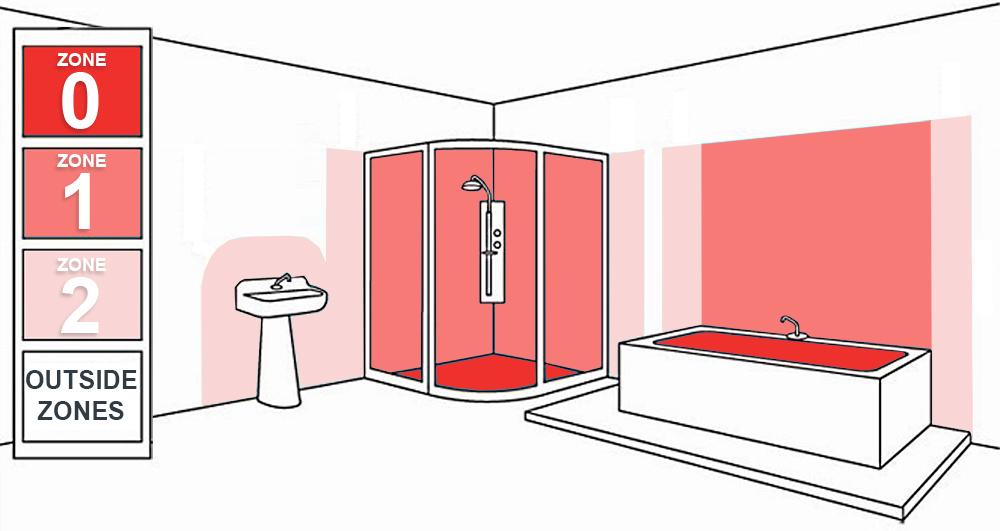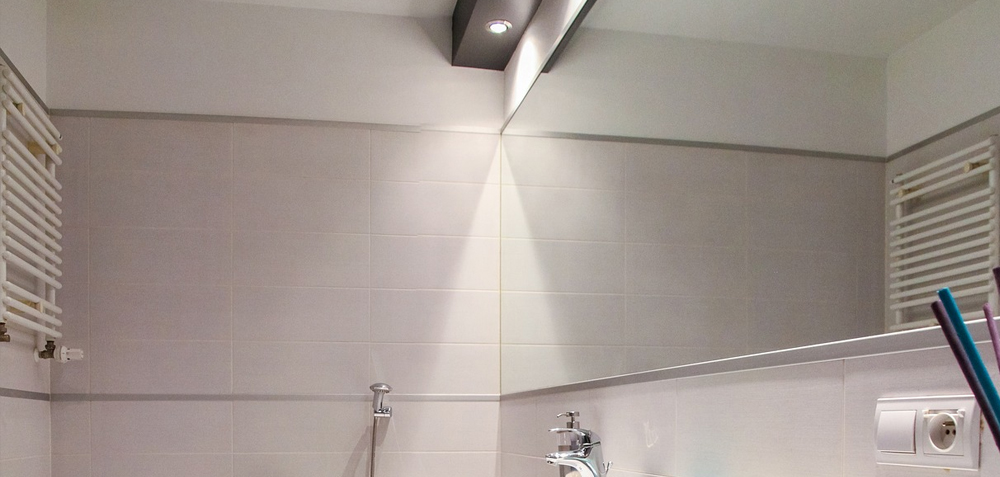
Most of us have a very clear vision of their dream bathroom, so renovating or designing a new one from scratch can be very exciting. Whether you dream of Edwardian splendour or crisp minimalism, there are hundreds of inspiration ideas to get you started. From quirky mirrors, to the perfect taps (we love some of these designer taps at great discount prices) we’ve even considered how to creatively hack storage of everything from towels to hairgrips.
What can be harder to decide upon is lighting – in the morning we need it to be bright and functional, and by the evening we want a more relaxing atmosphere where we can soothe away the stress of the day. Add to this the strict regulations around bathroom electricity and lighting options, and your dream bathroom can quickly become a technical nightmare.
Here’s a breakdown of the must-know lighting jargon, so you can cut through the confusion, stay safe and return to your zen-space of wall tiles and showerheads…
IP Ratings
IP ratings can be found on every light fixture, and describe how difficult it is for objects or water to get inside once it has been properly fitted (IP stands for Ingress Protection). They can be identified by the letters “IP” followed by a 2-digit number, and bathroom lighting should have a rating of IP44 or higher, depending on the bathroom “zone” it’s in.
Bathroom Zones
We all know that water and electricity shouldn’t mix, so it’s no surprise that IEE Wiring Regulations identify high-risk areas of bathrooms, where extra care should be taken when installing and using electronics – including lighting. The corresponding legislation dictates that higher specification fixtures are required in specific zone within the bathroom:

Zone 0
Zone 0 is inside the actual bath or shower tray, where the light will be submerged in water. While this is a more common factor in swimming pools or hot tubs, the rise in chromatherapy lighting and jacuzzi baths are making these fittings more popular. Light fittings in Zone 0 must have a minimum rating of IP-7, and must be on a low voltage SELV circuit of 12v or less.
Zone 1
This is the area directly above the bath or shower tray up to 2.25m off the floor. Light fittings in this area must have a minimum rating of IP-4 to ensure it’s shielded from water spray, and if the power supply exceeds 240v then an RCD must be used to protect the circuit.
Zone 2
Up to 60cm beyond the edge of the bath and shower (and up to 2.25m off the floor) is Zone 2. A minimum of IP-4 is required for all light fittings. It’s advisable to also treat the area 60cm around the sink as Zone 2.
Zone 3
Zone 3 covers the remaining areas, where it is unlikely that bulbs will be splashed by water, and there is no minimum IP requirement. However, if any of your bathroom units have water jet features, all fixtures should be a rating of IP-5 or higher.

Light Switches
Light switches inside the bathroom should always be a pull cord to minimise risk. Regular light switches can be used if located outside the bathroom.
Task Lighting vs. Decorative Lighting
A combination of well-chosen task lighting and decorative fittings can help to create a bathroom that transitions from functional to relaxing at the flick of a switch (or two).
Task lighting
Task lights are functional, and are there to eliminate shadows to make jobs like shaving or applying make up easier. The best task lighting will complement any available natural light, and will depend on the size and shape of your room. It can include:
– Backlit mirrors
– Bright downlights
– Functional ceiling fixtures
Decorative lighting
Perfect for creating a relaxing atmosphere or dramatic statement, decorative lighting is best for expressing your style. Examples of decorative lighting
– Delicate chandeliers
– Under-cupboard lighting
– Angled spotlights
– Softly lit mirrors
Choosing Bulbs:
Don’t let a bad bulb spoil your beautiful new bathroom. You might consider the shape and brightness of your new bulbs, but also factor in replacement costs and the effect on your energy bills when picking new lighting. Traditional bulbs are generally being replaced by brighter, more efficient alternatives, like LEDs or CFLs. Both of these options will cut your energy bills and last longer than filament or incandescent lighting. Halogen bulbs are very popular for spotlights, but be aware that in a small bathroom they can get very hot, so again, LEDs may be a better option.
